Skin irritations and rashes are some of the most common medical conditions. Anyone can be susceptible to skin irritations like dry skin or hives. While most are not serious, they can still impact your quality of life.
Learn more about the causes and symptoms of skin irritations so you can enjoy yourself without fear of annoying itching and scratching!
What causes rashes and skin irritation?
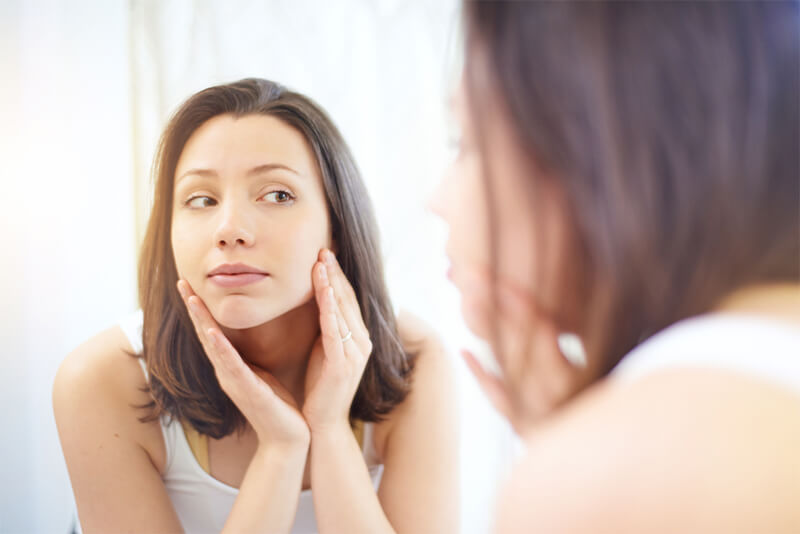
There are many causes for skin irritations, ranging from chaffing to allergic reactions. Most are harmless and disappear on their own without medical treatment.
Depending on the underlying causes, skin irritations can be acute or chronic. All skin irritations come from inflammation of the skin, despite the hundreds of potential causes. This inflammation usually manifests in the form of a rash.
Causes and symptoms of skin irritations
Here are some common causes of skin irritations:
- Contact dermatitis
- Dry skin
- Hives
- Eczema
- Chickenpox
If you’re experiencing a skin irritation, you will most likely notice a rash accompanied by itchy and scaly skin. In some cases, the area may also be inflamed.
Rashes and skin irritations are rarely causes for concern, but when combined with other symptoms, they could be indicators for serious conditions.
If you have concerns about your rash or other skin-related symptoms, it’s always a good idea to consult a medical professional, especially if your symptoms worsen.
Allergic reactions
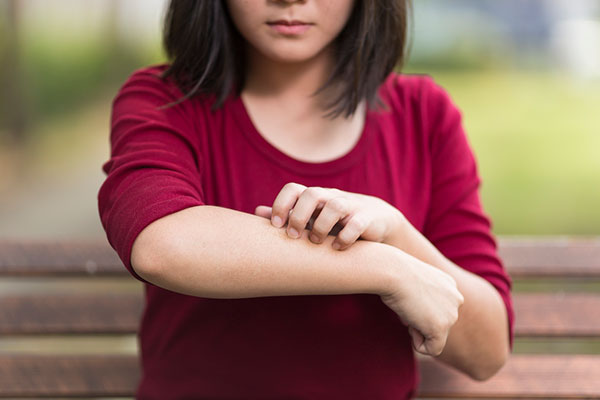
By far the most common form of skin irritation, contact dermatitis, is usually caused by direct contact with an allergen or irritant. This irritation causes the skin to become inflamed. As a result, a rash forms on the affected area.
The good news is that contact dermatitis is very rarely serious; however, some forms of dermatitis can be an indicator of a more serious condition.
Common causes of allergic reactions
Some of the most common allergens and irritants include:
- Metals, such as nickel
- Rubber or latex
- Poison ivy, poison oak or other plants
- Soaps or deodorants
- Detergents
- Household cleaners like bleach
- Chaffing or other prolonged mechanical irritation
Most mild forms of dermatitis can be treated with over-the-counter medications, lotions or home remedies, especially for something like poison ivy.
If you experience skin irritation along with other more serious symptoms, such as fever, consult a medical professional right away.
What causes dry skin?
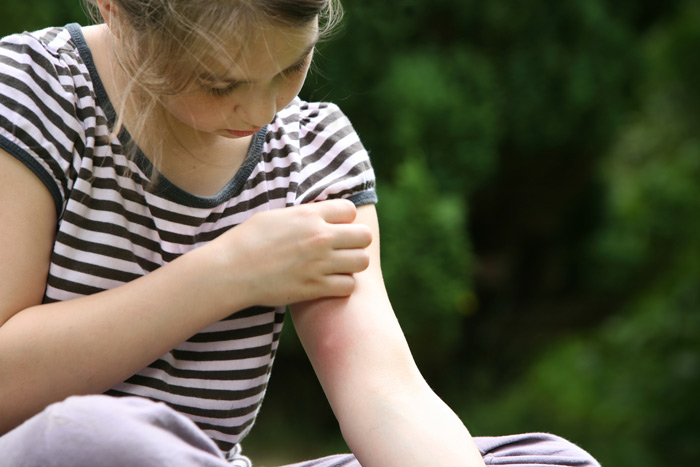
Dry skin affects people of all ages, especially during the winter months, and it occurs when your skin loses too much water or oil.
A few common causes of dry skin include:
- A dry environment
- Swimming in chlorine for prolonged periods of time
- Taking hot showers for prolonged periods of time
- Age
If you’re experiencing dry skin, you will most likely notice that your skin has become rough or scaly, very itchy and, in some cases, gray or ashen. It’s not uncommon for dry skin to crack as well.
How to treat dry skin
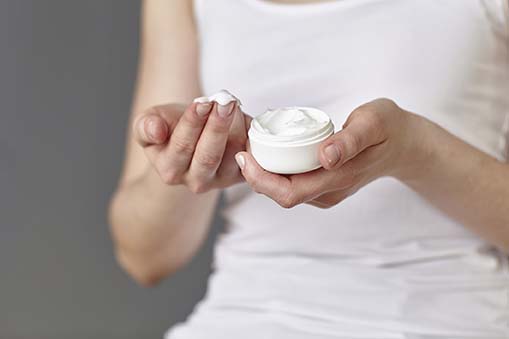
Dry skin may be annoying, but it rarely needs to be examined by a provider. Home remedies like lotions and taking care of your skin during winter usually help. Here are five tips to help alleviate the irritation of dry skin:
- Oatmeal baths: oatmeal is a great anti-inflammatory remedy
- Coconut oil: used as a lotion, coconut oil’s emollient properties help smooth skin
- Cooler showers: hot water tends to dry skin
- Humidifier: adding moisture to the air in your home can minimize overall dryness
- Water: drinking eight or more glasses of water a day promotes healthy skin
If your dry skin is causing fissures and cracks on the surface, this can put you at risk for infections. When these areas become red and swollen, an infection has developed and will require a visit to a healthcare professional.
What are hives?
Hives, known as urticaria in the medical community, are raised welts on the skin. These welts can come in all different shapes and sizes, from small and round to large and oblong.
Almost 20 percent of the world’s population will have hives at some point during their lifetime.
What causes hives?
Hives are normally caused by an allergic reaction; however, stress, infection and illness can also cause an outbreak. Some of the most common allergic causes of hives include:
- Pet dander
- Foods
- Medications
- Insect stings
- Latex
- Plants
Nonallergic causes of hives include:
- Viral infections
- Mechanical contact (dermographia)
If you’ve developed hives, you will likely notice pink or red raised bumps on your skin, blanching (where the skin turns white if pressure is applied), stinging, itchiness or achiness in the affected areas.
What to do if you have hives
The good news is that hives will probably go away after a few days and does not require medical attention.
When you first notice the hives, make sure they’re not spreading to your throat or tongue, as this can cause difficulty breathing. If you are struggling to breathe, go to the nearest ER for immediate medical attention.
In most cases of hives, you will not need prescription treatment. Home remedies, time and over-the-counter medications usually clear up the outbreak. If you need some quick relief, try the following:
- Take an oatmeal bath to reduce irritation
- Take over-the-counter antihistamines to reduce swelling and itching
- Avoid hot water
- Avoid touching the affected area
Seek medical attention if hives don’t go away after a week or if the symptoms worsen. A healthcare provider can help determine the cause of your hives and, if necessary, recommend a referral for allergy testing.
What is eczema?
People commonly use “eczema” to refer to the skin condition known as atopic dermatitis, which is a specific variation of skin irritation.
This skin condition is commonly found in babies and children. While adults can still get eczema, they aren’t as susceptible due to increased tolerance to irritants. Cases of eczema can be acute or chronic, depending on the underlying causes.
Symptoms and treatment of eczema
The true cause of eczema is not completely understood, although it is believed that individuals with a strong family history of the condition are more susceptible. Common symptoms of eczema include:
- Itching
- Dry skin or a thickening or scaling of the skin
- Paleness of the skin, especially around the mouth or elbows
- Rash, with potential for crusting or oozing
Lifestyle changes may be necessary to combat and alleviate symptoms of eczema, such as using unscented or mild soaps and avoiding hot showers.
If medical treatment is necessary, you may expect one or all of the following:
- Over-the-counter moisturizers or emollients
- Prescription steroid creams
- Antihistamines to reduce itching
- Antibiotics applied directly to the skin to treat infection
In chronic cases, a dermatologist may recommend phototherapy treatment if skin care and medications are not effective. Phototherapy uses ultraviolet light to reduce areas of inflammation.
What is poison oak?
The most common skin problem associated with contact with a plant and the oil it produces. Poison oak causes a red, itchy rash also known as allergic contact dermatitis.
Touching or brushing up against any part of a poison oak plant causes the rash, regardless if the plant is dead.
You can also get the rash by touching something that’s been in contact with poison oak.
(Note: you can only catch the rash by touching the oil that comes from poison.)
Symptoms of poison oak

When you’ve had your first exposure to poison oak, it may take more than a week for the rash to develop. With subsequent exposures, the reaction will occur in a day or two.
If you’re having a reaction to poison oak contact, you may experience:
- Itchy skin
- Red streaks where the contact has happened
- Small bumps or hives
- Blisters that may leak fluid
- Difficulty breathing
- Swelling of the face, mouth, neck or genitals
- Large blisters that ooze fluid
How is poison oak treated?
If your poison oak rash is mild, you may be able to treat it at home:
- Apply a wet compress to the affected areas
- Use over-the-counter ointments or lotions, such as calamine lotion
- Take an oral antihistamine to reduce inflammation
- Avoid scratching the rash
- Avoid using topical antihistamines, topical anesthetics or topical antibiotics
If this doesn’t help, see a provider.
A provider should be able to diagnose the rash by simply looking at it and will most likely ask you when you were exposed to the plant, how long it took the rash to appear, if you’ve had any other rashes, and what your outdoor activities, work and hobbies look like.
Can Urgent Care help with acne?
Although acne is not a serious medical condition, and can be frustrating when it flares up.
Acne is considered an inflammatory skin condition that results in pimples—specifically on the face, shoulders, back, neck, chest and upper arms.
Typically, acne will appear as a whitehead, blackhead, pimple, cyst or nodule.
Many people will experience acne during puberty because the sebaceous glands are activated; however, it can occur anytime in life.
How to help treat acne
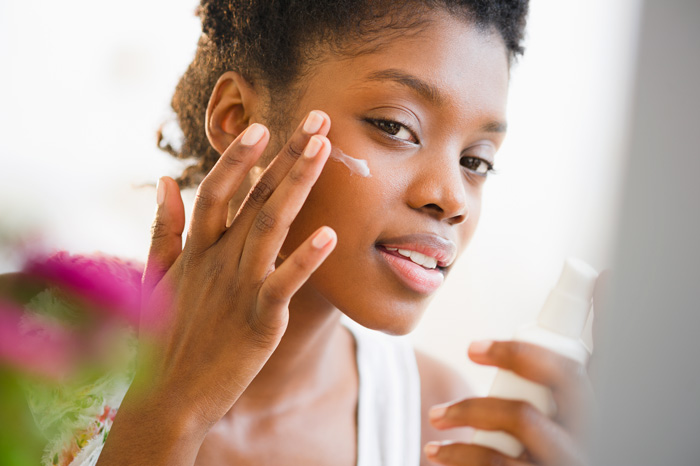
If the acne is mild, it can usually be treated with over-the-counter remedies, like gels, soaps, pads, creams and lotions. For acne that is moderate or severe, you may need to see a skin specialist or dermatologist.
These specialists may recommend a corticosteroid injection to help prevent scarring, minimize inflammation and speed the healing process and can prescribe an oral antibiotic to minimize the occurrence. This type of treatment is usually used for a maximum of six months.
To help keep your face clear of acne, follow these recommendations;
- Wash no more than twice daily with warm water and a gentle soap
- Keep your hands off your face
- Never pick at your face when a pimple appears
- If you wear makeup, choose one made specifically for sensitive skin
What is scabies?
There are an estimated 130 million cases of scabies at any given time, but most people are unaware of the skin condition. So what causes it? A parasitic mite called the Sarcoptes scabiei burrows into the skin and lays eggs. The result is an itchy, red rash called scabies.
Scabies is very contagious and easily passed from person to person via direct skin contact. It’s also possible it to be transmitted through clothing or bedding that’s been infested.
How is scabies treated?
After exposure, it can take up to six weeks for scabies symptoms to appear. The most common sites on the body for scabies to appear include the:
- Wrist
- Elbow
- Armpit
- Waist
- Buttocks
To treat scabies, the infestation must be removed using prescription ointments, creams and lotions. In some cases, your provider may recommend an oral medication. In order for the medication to work, you will likely need to put it on the affected area at night when the mites are most active. The medication can be washed off the next morning.
To help with some of the other symptoms that are associated with scabies, your provider may recommend that you take additional medication such as an antihistamine, antibiotic or steroid cream.
It’s important to note that scabies symptoms often appear worse before they get better; however, you should notice less itching after the first week of treatment. If your symptoms haven’t gone away after four weeks of treatment, you should revisit your provider.
What are warts?
Although warts are unpleasant to look at, they are typically completely harmless.
A common skin wart is caused when an infection occurs in the top layer of skin as a result of the human papillomavirus—more commonly known as HPV. As the virus invades the top layer of skin, usually after a scratch in the skin has occurred, it causes cells to grow rapidly on the outer most layer of the skin, resulting in a wart.
Almost everyone will come in contact with the virus—which has more than 100 unique forms—at some point, whether it’s from shaking hands, turning doorknobs or simply typing on a keyboard. Some forms of the virus are more likely to cause warts on the hand, while others may result in genital warts.
How are warts treated?
If you notice a wart on your skin, you should have it treated before it spreads. Typically, a dermatologist will recommend starting with a home remedy or wart removal, which can be purchased at the drugstore.
Home remedies usually include a salicylic acid, clear nail polish or tape that will suffocate the virus. If you opt for an over-the-counter salicylic acid or propane freezing solution, it’s important that you’re diligent when using it since it can take up to a few months for the entire wart to be removed.
For warts that are either physically or visibly uncomfortable, your dermatologist can freeze or burn off the wart. This may take multiple visits if the wart returns.
Unfortunately, it’s nearly impossible to prevent being exposed to HPV, but there are things you can do to minimize your risk. These include:
- Washing your hands regularly with soap and warm water
- Cleaning gym equipment prior to using it
- Wearing rubber flip-flops if you’re planning to use a communal shower
CareNow® Urgent Care can help treat troublesome skin conditions
One easy way to get checked out by a medical professional is to visit your nearest CareNow® clinic.
Our clinics are open seven days a week for walk-in patients.
Before your appointment, use our Web Check-In® to wait from home before your visit!
Disclaimer: Patient’s health can vary. While this content was approved for publishing by a board certified medical director, always consult with your personal medical professional first before deciding that any medical advice from the internet is right for you.
